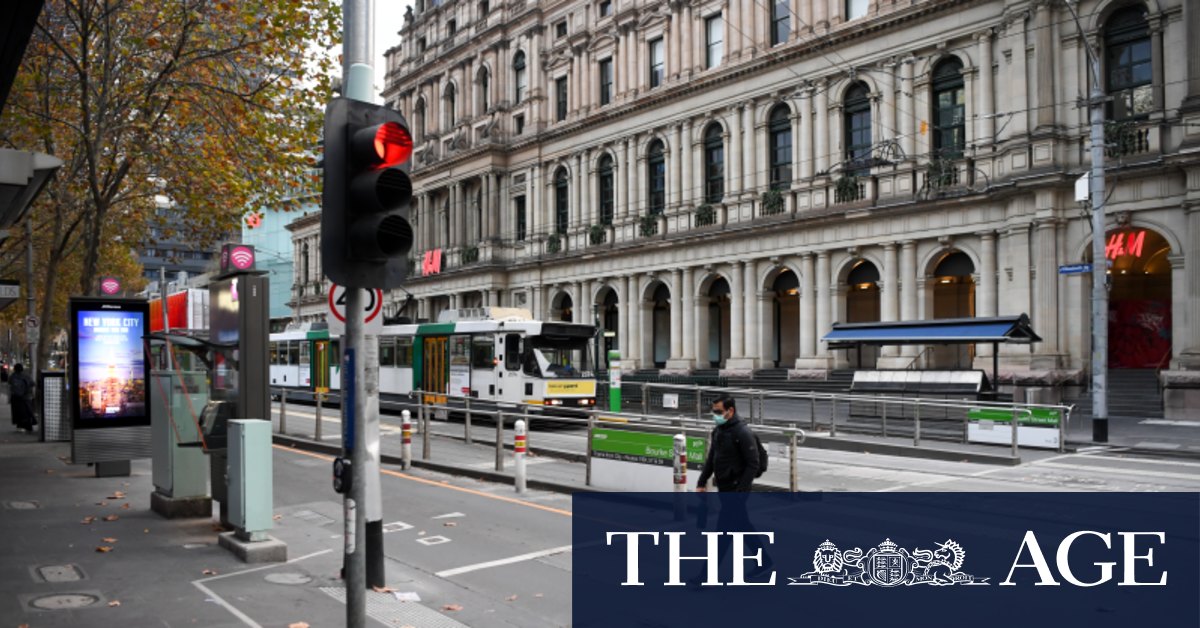Melburnians head for the country and Brisbane in wake of virus

Melburnians are leaving the city and heading for cheaper housing and lockdown-free life in the state’s regions and other parts of the country as the coronavirus pandemic up-ends migration across the country.
A record net 11,800 people left the nation’s capital cities in the three months to the end of March, the Australian Bureau of Statistics reported on Tuesday, with Sydney and Melbourne feeling the pandemic-fuelled drain.
Since the start of the pandemic, a net 22,651 people have left Melbourne for other parts of Victoria. In total, Melbourne has lost a net 34,366 residents, including 3682 who have made the move to Brisbane.
In the March quarter, a net 8300 people left Greater Melbourne compared to 8500 in the final three months of 2020. It was the second-largest quarterly drop in internal migration for Melbourne this century.
Victoria failed to make a net gain of residents from any state or territory over the three months, with its biggest loss, of 2900, to Queensland.
People in the prime of their working years are the biggest group moving out of Melbourne.
A net 2500 people aged between 25 and 44 left the city in the March quarter while 2800 aged between 45 and 64 took flight. They took with them 1800 children under the age of 14.
While Sydney and Melbourne shed residents, Brisbane and Perth are increasingly attractive to internal migrants. Brisbane has gained 16,300 people from other parts of the country since the start of the pandemic while Perth has gained 5072.
The ABS figures pre-date the latest Greater Sydney lockdown.
KPMG urban and regional planner Terry Rawnsley said the pandemic had changed population patterns.
“Melbourne is a good case study. Before COVID, Melbourne was drawing people in every quarter from elsewhere in Australia. The second COVID hit and we had long lockdowns, we saw a significant outflow of people from Greater Melbourne,†he said.
However, Mr Rawnsley said it looked as though young people were starting to return to cities such as Melbourne for education and lifestyle while older age groups continued to head for the hills in high numbers.
Working from home and flexible work might have a longer-term effect, allowing people to “stretch the travel budget†to up to two hours each way if not working in the office every day.
But the flipside was the effects in the regions, he said.
“A lot of regional communities have seen a huge surge in house prices and rents as more people have moved there. Part of the reason you’d go to a regional centre is to get away from COVID lockdown but also for more affordable housing. That [affordability] has disappeared quite quickly.
“The new challenge is that the regional areas which haven’t experienced population growth for a long time weren’t ready to accommodate this growth.â€
CommSec chief economist Craig James said older Australians were driving the change.
“The exodus from the city to the regions is being led by baby boomers and Generation X. In part, COVID-19 may be driving retirement plans. But the 25 to 44 cohort isn’t far behind,†he said.
HIA chief economist Tim Reardon said the increase in people shifting to regions was affecting their property markets, noting the change might be permanent.
“Given that the population is moving interstate and building new homes, it is unlikely that they intend to return to Sydney or Melbourne,†he said.
While high house prices and lockdowns are driving changes in where Australians live, the Reserve Bank remains convinced the economy will rebound in the coming months.
The RBA held the official cash rate at 0.1 per cent following its board meeting on Tuesday and resisted making changes to its quantitative easing program.
Governor Philip Lowe said it was likely the September-quarter national accounts would show the economy contracting because of the impact of lockdowns in Sydney, Victoria, south-east Queensland and South Australia.
But in a sign the bank believes there is enough stimulus already in the economy, Dr Lowe said previous lockdowns had been overcome relatively quickly.
“The experience to date has been that once virus outbreaks are contained, the economy bounces back quickly. Prior to the current virus outbreaks, the Australian economy had considerable momentum and it is still expected to grow strongly again next year,†he said.
The Morning Edition newsletter is our guide to the day’s most important and interesting stories, analysis and insights. Sign up here.
Shane is a senior economics correspondent for The Age and The Sydney Morning Herald.
Jennifer Duke is an economics correspondent for The Sydney Morning Herald and The Age, based at Parliament House in Canberra.
0 Response to "Melburnians head for the country and Brisbane in wake of virus"
Post a Comment